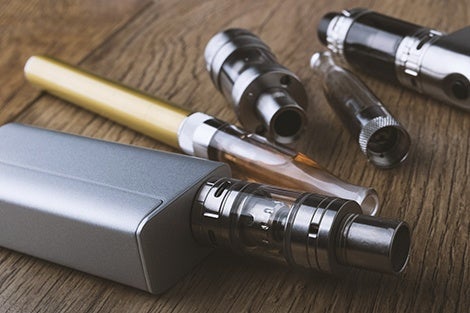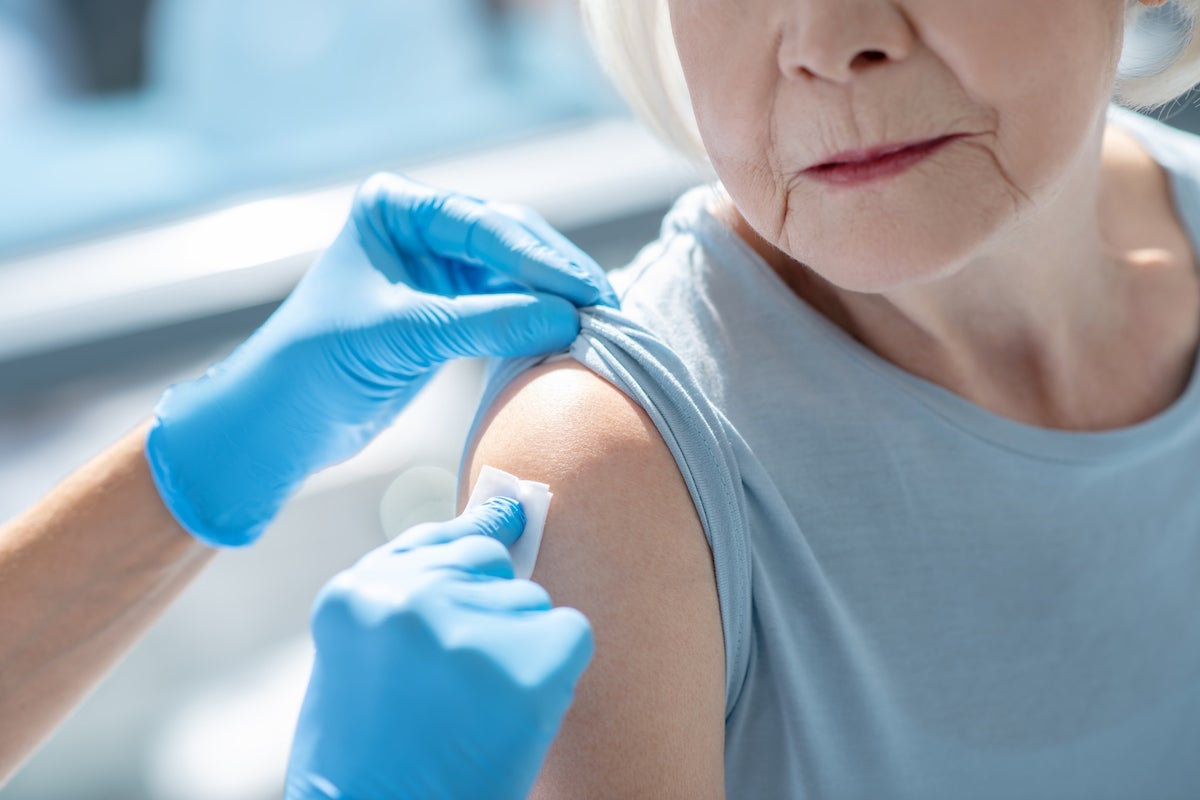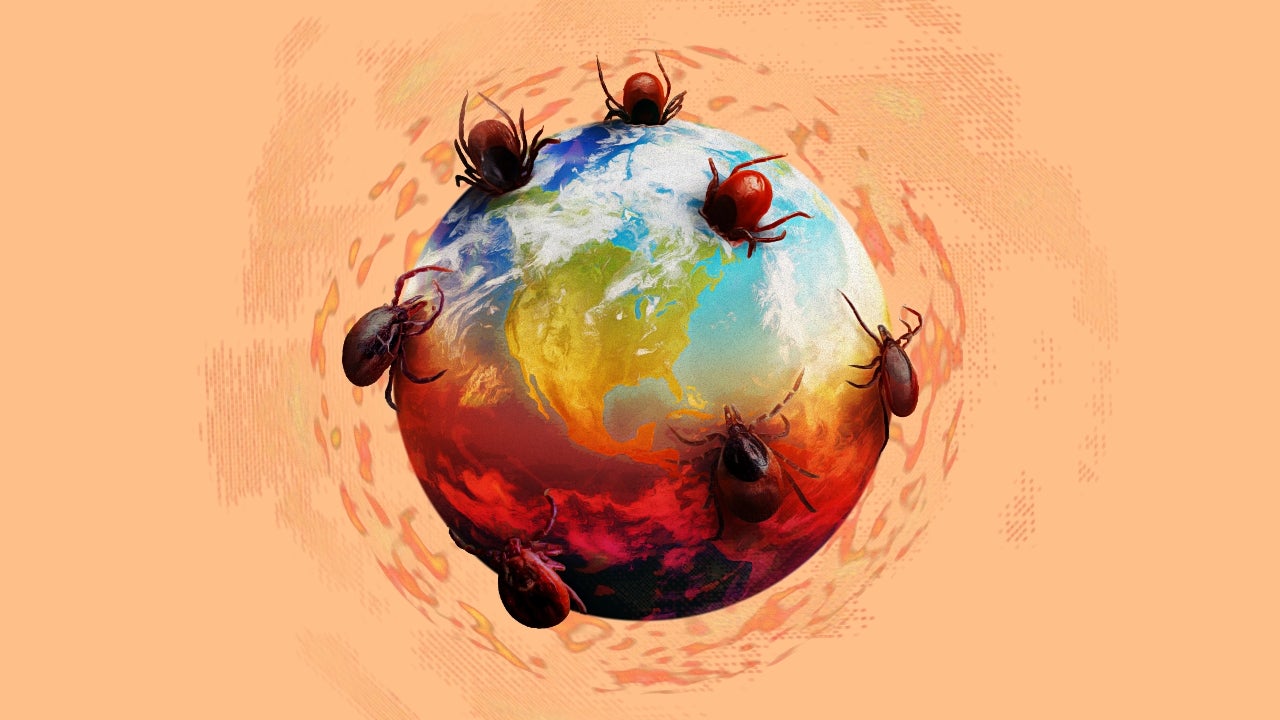Microbial contaminants found in popular e-cigarettes

For immediate release: April 24, 2019
Boston, MA – Popular electronic cigarette (e-cigarette) products sold in the U.S. were contaminated with bacterial and fungal toxins, according to new research from Harvard T.H. Chan School of Public Health.
The study, which examined 75 popular e-cigarette products—cartridges (single use) and e-liquids (refillable material)—found that 23% contained traces of endotoxin, a microbial agent found on Gram-negative bacteria, and that 81% contained traces of glucan, which is found in the cell walls of most fungi. Exposure to these microbial toxins has been associated with myriad health problems in humans, including asthma, reduced lung function, and inflammation.
“Airborne Gram-negative bacterial endotoxin and fungal-derived glucans have been shown to cause acute and chronic respiratory effects in occupational and environmental settings,” said David Christiani, Elkan Blout Professor of Environmental Genetics and senior author of the study. “Finding these toxins in e-cigarette products adds to the growing concerns about the potential for adverse respiratory effects in users.”
The study was published online in Environmental Health Perspectives on April 24, 2019.
The use of e-cigarettes has been steadily climbing in recent years, especially among high school and middle school students. It’s estimated that more than three million high school students used e-cigarettes in 2018, up from 220,000 in 2011. Previous research from Harvard Chan School has shown that chemicals linked with severe respiratory disease are found in common e-cigarette flavors. Moreover, research by HSPH investigators conducted over many decades has shown chronic lung impairment in populations exposed to airborne biological contaminants. Yet, according to the authors, no research exists on the potential contamination of e-cigarettes with microbes or microbial toxins.
For this study, the researchers selected 37 e-cigarette cartridges, sometimes referred to as “cigalikes,” and 38 e-liquid products, which can be used to refill certain cartridges, from the ten top-selling U.S. brands. The products were classified into four different flavor categories: tobacco, menthol, fruit, and other. All of the products were then screened for the presence of endotoxin and glucan.
The findings showed that 17 of 75 products (23%) contained detectable concentrations of endotoxin and that 61 of 75 products (81%) contained detectable concentrations of glucan. Further analysis showed that cartridge samples had 3.2 times higher concentrations of glucan than the e-liquid samples. Glucan concentrations were also significantly higher in tobacco- and menthol-flavored products than in fruit-flavored products. The study also found that endotoxin concentrations were higher in fruit-flavored products, indicating that raw materials used in the production of flavors might be a source of microbial contamination.
The researchers noted that the contamination of the products could have occurred at any point during the production of the ingredients or of the finished e-cigarette product. They hypothesized that cotton wicks used in e-cigarette cartridges may be one potential source of contamination, as both endotoxin and glucan are known contaminants of cotton fibers.
“In addition to inhaling harmful chemicals, e-cig users could also be exposed to biological contaminants like endotoxin and glucan,” said Mi-Sun Lee, research fellow and lead author of the paper. “These new findings should be considered when developing regulatory policies for e-cigarettes.”
Joseph Allen, assistant professor of exposure assessment science, was also a co-author.
Funding for this study came from National Institute for Occupational Safety and Health grant T42 OH008416.
“Endotoxin and (1®3)-b-D-glucan Contamination in Electronic Cigarette Products Sold in the U.S.,” Mi-Sun Lee, Joseph Allen, David Christiani, Environmental Health Perspectives, online April 24, 2019, doing: 10.1289/EHP3469
photo: iStock
Visit the Harvard Chan School website for the latest news, press releases, and multimedia offerings.
For more information:
Chris Sweeney
617.432.8416
csweeney@hsph.harvard.edu
###
Harvard T.H. Chan School of Public Health brings together dedicated experts from many disciplines to educate new generations of global health leaders and produce powerful ideas that improve the lives and health of people everywhere. As a community of leading scientists, educators, and students, we work together to take innovative ideas from the laboratory to people’s lives—not only making scientific breakthroughs, but also working to change individual behaviors, public policies, and health care practices. Each year, more than 400 faculty members at Harvard Chan School teach 1,000-plus full-time students from around the world and train thousands more through online and executive education courses. Founded in 1913 as the Harvard-MIT School of Health Officers, the School is recognized as America’s oldest professional training program in public health.


